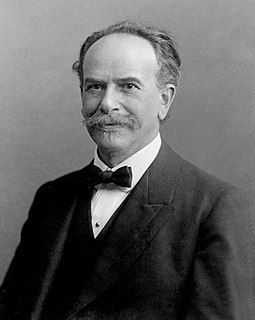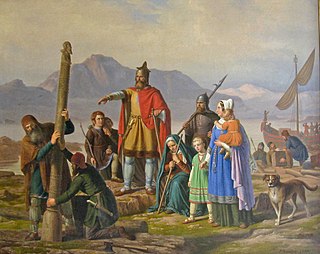 W
WCultural anthropology is a branch of anthropology focused on the study of cultural variation among humans. It is in contrast to social anthropology, which perceives cultural variation as a subset of a posited anthropological constant. The umbrella term sociocultural anthropology includes both cultural and social anthropology traditions.
 W
WBoasian anthropology was a school within American anthropology founded by Franz Boas in the late 19th century.
 W
WAmerican anthropology has culture as its central and unifying concept. This most commonly refers to the universal human capacity to classify and encode human experiences symbolically, and to communicate symbolically encoded experiences socially. American anthropology is organized into four fields, each of which plays an important role in research on culture:biological anthropology linguistic anthropology cultural anthropology archaeology
 W
WAnthropology of media is an area of study within social or cultural anthropology that emphasizes ethnographic studies as a means of understanding producers, audiences, and other cultural and social aspects of mass media.
 W
WThe Burung Petala Processions referred to a series of imperial parade to commemorate the circumcision ceremony of the Kelantanese nobility. During the grand cavalcade, the prince and his royal entourage were celebrated around Kota Bharu via a large bird-like processional cart, notably the grand chariot of 1933 known as Burung Petala Indra and tandu Burung Petalawati of 1923. The processions were held three times between 1919 and 1933.
 W
WThe cargo system is a collection of secular and religious positions held by men or households in rural indigenous communities throughout central and southern Mexico and Central America. These revolving offices, or cargos, become the unpaid responsibility of men who are active in civic life. They typically hold a given post for a term of one year, and alternate between civic and religious obligations from year to year. Office holders execute most of the tasks of local governments and churches. Individuals who hold a cargo are generally obligated to incur the costs of feasting during the fiestas that honor particular saints.
 W
WA civilization is any complex society that is characterized by urban development, social stratification, a form of government, and symbolic systems of communication.
 W
WCrab mentality, also known as crab theory, crabs in a bucket mentality, or the crab-bucket effect, is a way of thinking best described by the phrase "if I can't have it, neither can you". The metaphor is derived from a pattern of behavior noted in crabs when they are trapped in a bucket. While any one crab could easily escape, its efforts will be undermined by others, ensuring the group's collective demise.
 W
WIn anthropology and geography, a cultural region, cultural sphere, cultural area or culture area refers to a geography with one relatively homogeneous human activity or complex of activities (culture). Such activities are often associated with an ethnolinguistic group and with the territory it inhabits. Specific cultures often do not limit their geographic coverage to the borders of a nation state, or to smaller subdivisions of a state. Cultural "spheres of influence" may also overlap or form concentric structures of macrocultures encompassing smaller local cultures. Different boundaries may also be drawn depending on the particular aspect of interest, such as religion and folklore vs. dress and architecture vs. language.
 W
WThe relationships between digital media use and mental health have been investigated by various researchers—predominantly psychologists, sociologists, anthropologists, and medical experts—especially since the mid-1990s, after the growth of the World Wide Web. A significant body of research has explored "overuse" phenomena, commonly known as "digital addictions", or "digital dependencies". These phenomena manifest differently in many societies and cultures. Some experts have investigated the benefits of moderate digital media use in various domains, including in mental health, and the treatment of mental health problems with novel technological solutions.
 W
WThe Doon School Quintet is a five-part ethnographic film series made by the American visual anthropologist and documentary filmmaker David MacDougall, between 1997 and 2000, at The Doon School, an all-boys boarding school in India. For thirteen months over three years, MacDougall lived with the students and was given unprecedented access for filming inside the residential campus. By the end, MacDougall had more than 85 hours of material, which he edited into 5 parts, with a total duration of about 8 hours. The project ranks among MacDougall's most ambitious and longest works and is the only film series in his oeuvre.
 W
WEthnography is a branch of anthropology and the systematic study of individual cultures. Ethnography explores cultural phenomena from the point of view of the subject of the study. Ethnography is also a type of social research involving the examination of the behaviour of the participants in a given social situation and understanding the group members' own interpretation of such behaviour.
 W
WGeophagia, also known as geophagy, is the intentional practice of eating earth or soil-like substances such as clay, chalk, or termite mounds. It occurs in many non-human animals and has been documented in more than 100 primate species. Geophagy also occurs in humans and is most commonly reported among children and pregnant women. Human geophagia is a form of pica – the craving and purposive consumption of non-food items – and is classified as an eating disorder in the Diagnostic and Statistical Manual of Mental Disorders (DSM) if not socially or culturally appropriate. Although its etiology remains unknown, geophagy has many potential adaptive health benefits as well as negative sequelae.
 W
WHospitality is the relationship between a guest and a host, where in the host receives the guest with goodwill, including the reception and entertainment of guests, visitors, or strangers. Louis, chevalier de Jaucourt describes hospitality in the Encyclopédie as the virtue of a great soul that cares for the whole universe through the ties of humanity. Hospitality is also the way people treat others, that is the service of welcoming receiving guests for example in hotels. Hospitality plays a fundamental role to augment or decrease the volume of sales of an organization hence every business should master it.
 W
WHuman Universals is a book by Donald Brown, an American professor of anthropology (emeritus) who worked at the University of California, Santa Barbara. It was published by McGraw Hill in 1991. Brown says human universals, "comprise those features of culture, society, language, behavior, and psyche for which there are no known exception."
 W
WAn intangible cultural heritage (ICH) is a practice, representation, expression, knowledge, or skill considered by UNESCO to be part of a place's cultural heritage. Buildings, historic places, monuments, and artifacts are physical intellectual wealth. Intangible heritage consists of nonphysical intellectual wealth, such as folklore, customs, beliefs, traditions, knowledge, and language. Intangible cultural heritage is considered by member states of UNESCO in relation to the tangible World Heritage focusing on intangible aspects of culture. In 2001, UNESCO made a survey among States and NGOs to try to agree on a definition, and the Convention for the Safeguarding of Intangible Cultural Heritage was drafted in 2003 for its protection and promotion.
 W
WKula, also known as the Kula exchange or Kula ring, is a ceremonial exchange system conducted in the Milne Bay Province of Papua New Guinea. The Kula ring was made famous by the father of modern anthropology, Bronisław Malinowski, who used this test case to argue for the universality of rational decision making, and for the cultural nature of the object of their effort. Malinowski's path-breaking work, Argonauts of the Western Pacific (1922), directly confronted the question, "why would men risk life and limb to travel across huge expanses of dangerous ocean to give away what appear to be worthless trinkets?" Malinowski carefully traced the network of exchanges of bracelets and necklaces across the Trobriand Islands, and established that they were part of a system of exchange, and that this exchange system was clearly linked to political authority. Malinowski's study became the subject of debate with the French anthropologist, Marcel Mauss, author of The Gift. Since then, the Kula ring has been central to the continuing anthropological debate on the nature of gift giving, and the existence of gift economies.
 W
WIn anthropology, liminality is the quality of ambiguity or disorientation that occurs in the middle stage of a rite of passage, when participants no longer hold their pre-ritual status but have not yet begun the transition to the status they will hold when the rite is complete. During a rite's liminal stage, participants "stand at the threshold" between their previous way of structuring their identity, time, or community, and a new way, which completing the rite establishes.
 W
WNature, Culture and Gender is a book length social science essay collection that analyzes views that describe "nature" as inferior to "culture". Hence, the authors draw on anthropology and history to critique ideologies that, by equating women with nature, renders the female gender as inferior, while the male, equated to culture is seen as superior. The co-editors of this book published in 1980 by Cambridge University Press are Carol MacCormack and Marilyn Strathern. The contributing authors are Carol P. MacCormack, Maurice Bloch, Jean H. Bloch, L. J. Jordanova, Olivia Harris, Jane C. Goodale, Gillian Gillison, Marilyn Strathern.
 W
WNazism in the Americas has existed since the 1930s and still exists today. The membership of the earliest groups reflected the sympathies of some German-Americans and German Latin-Americans toward Nazi Germany, embracing the National Socialist spirit in Europe and establishing it within the Americas. Throughout the inter-war period and the outbreak of World War II, American Nazi parties engaged in activities such as sporting Nazi propaganda, storming newspapers, spreading Nazi-sympathetic materials and infiltrating other non-political organizations.
 W
WA nomad is a member of a community without fixed habitation which regularly moves to and from the same areas. Such groups include hunter-gatherers, pastoral nomads, and tinkers or trader nomads. In the twentieth century, population of nomadic pastoral tribes slowly decreased, reaching to an estimated 30–40 million nomads in the world as of 1995.
 W
WOrality is thought and verbal expression in societies where the technologies of literacy are unfamiliar to most of the population. The study of orality is closely allied to the study of oral tradition.
 W
WSeeing Anthropology: Cultural Anthropology Through Film by Karl G. Heider introduces cultural anthropology with the use of both text and audiovisual media. First published in 1997, the work uses the tools of the ethnographic film discipline to inform its audience of the various cultural anthropology topics. Also, the text covers 14 different cultures in 17 chapters, which are also represented in 21 different short film clips ranging from two to twelve minutes.
 W
WA settler is a person who has migrated to an area and established a permanent residence there, often to colonize the area.
 W
WShetani are spirits of East African mythology and popular belief. Mostly malevolent, and found in many different forms and different types with different powers, shetani are a popular subject of carved artwork, especially by the Makonde people of Tanzania, Mozambique, and Kenya. Physically, shetani of various types appear as distorted human and animal figures.
 W
WA taboo is an implicit prohibition on something based on a cultural sense that it is excessively repulsive or, perhaps, too sacred for ordinary people. Such prohibitions are present in virtually all societies. On a comparative basis, taboos, for example related to food items, seem to make no sense at all, as what may be declared unfit for one group by custom or religion may be perfectly acceptable to another.
 W
WTaboo is a documentary television series that premiered in 2002 on the National Geographic Channel. The program is an educational look into "taboo" rituals and traditions practiced in some societies, yet forbidden and/or illegal in others.
 W
WThe term tribe or digital tribe is used as a slang term for an unofficial community or organization of people who share a common interest, and usually who are loosely affiliated with each other through social media or other Internet mechanisms. The term is related to "tribe", which traditionally refers to people closely associated in both geography and genealogy. Nowadays, it looks more like a virtual community or a personal network and it is often called global digital tribe. Most anthropologists agree that a tribe is a (small) society that practices its own customs and culture, and that these define the tribe. The tribes are divided into clans, with their own customs and cultural values that differentiate them from activities that occur in 'real life' contexts. People feel more inclined to share and defend their ideas on social networks than they would dare to say to someone face to face. For example, it would be ridiculous to 'poke' someone in real life.
 W
WEdvard Alexander Westermarck was a Finnish philosopher and sociologist. Among other subjects, he studied exogamy and the incest taboo.
 W
WWestern culture, sometimes equated with Western civilization, Occidental culture, the Western world, Western society, and European civilization, is the heritage of social norms, ethical values, traditional customs, belief systems, political systems, artifacts and technologies of the Western world that originated in or are associated with Europe. The term also applies beyond Europe to countries and cultures whose histories are strongly connected to Europe by immigration, colonization, or influence. For example, Western culture includes countries in Northern America, such as Canada and the United States, or Australasia, such as Australia and New Zealand, whose language and demographic ethnicity majorities are of European descent without indigenous influence. Western culture is most strongly influenced by the Greco-Roman and Christian cultures.
 W
WWoman, Culture, and Society, first published in 1974, is a book consisting of 16 papers contributed by female authors and an introduction by the editors Michelle Zimbalist Rosaldo and Louise Lamphere. On the heels of the 1960s feminist movement, this book challenged anthropology's status quo of viewing studied cultures from a male perspective while diminishing female perspectives, even considering women as comparatively imperceptible. It is considered to be a pioneering work.
 W
WYaylak is a summer highland pasture associated with transhumance pastoralism in several Central and Western Asian communities. There are different variants of yaylak pastoralism forms of alpine transhumance, some of which are similar to seminomadic pastoralism, although most are similar to herdsman husbandry. However, in the Eurasian steppes, the Middle East and North Africa, yaylak pastoralism often coexists with seminomadic pastoralism and pastoral nomadism. The term had been commonly used in Soviet anthropology.